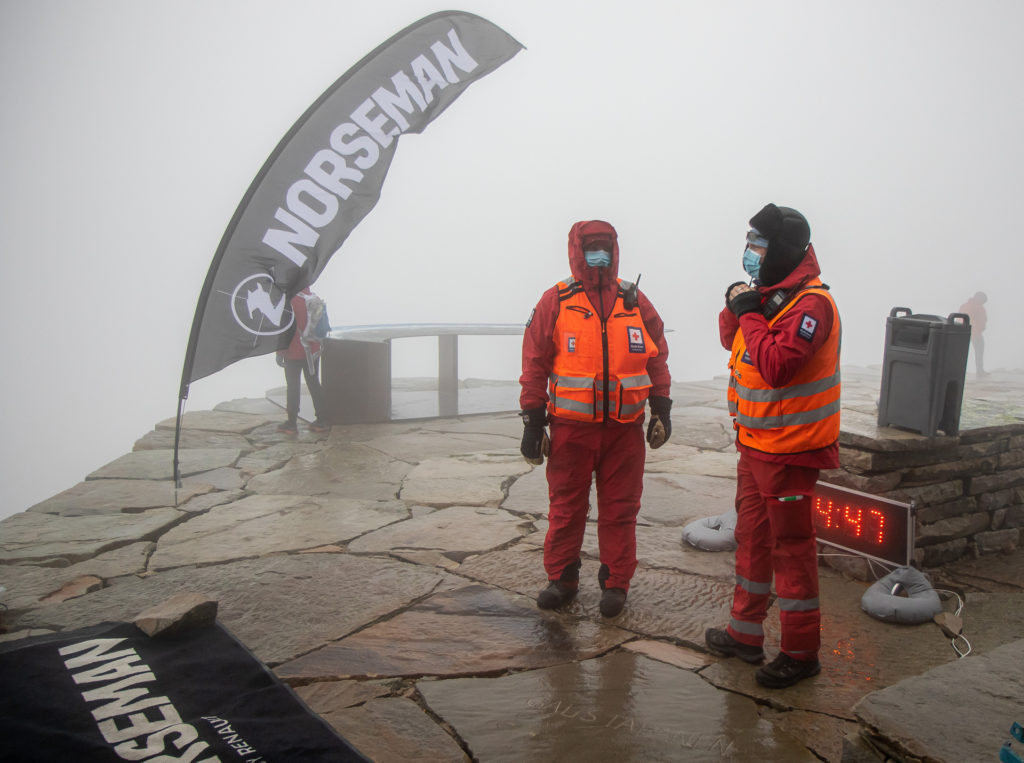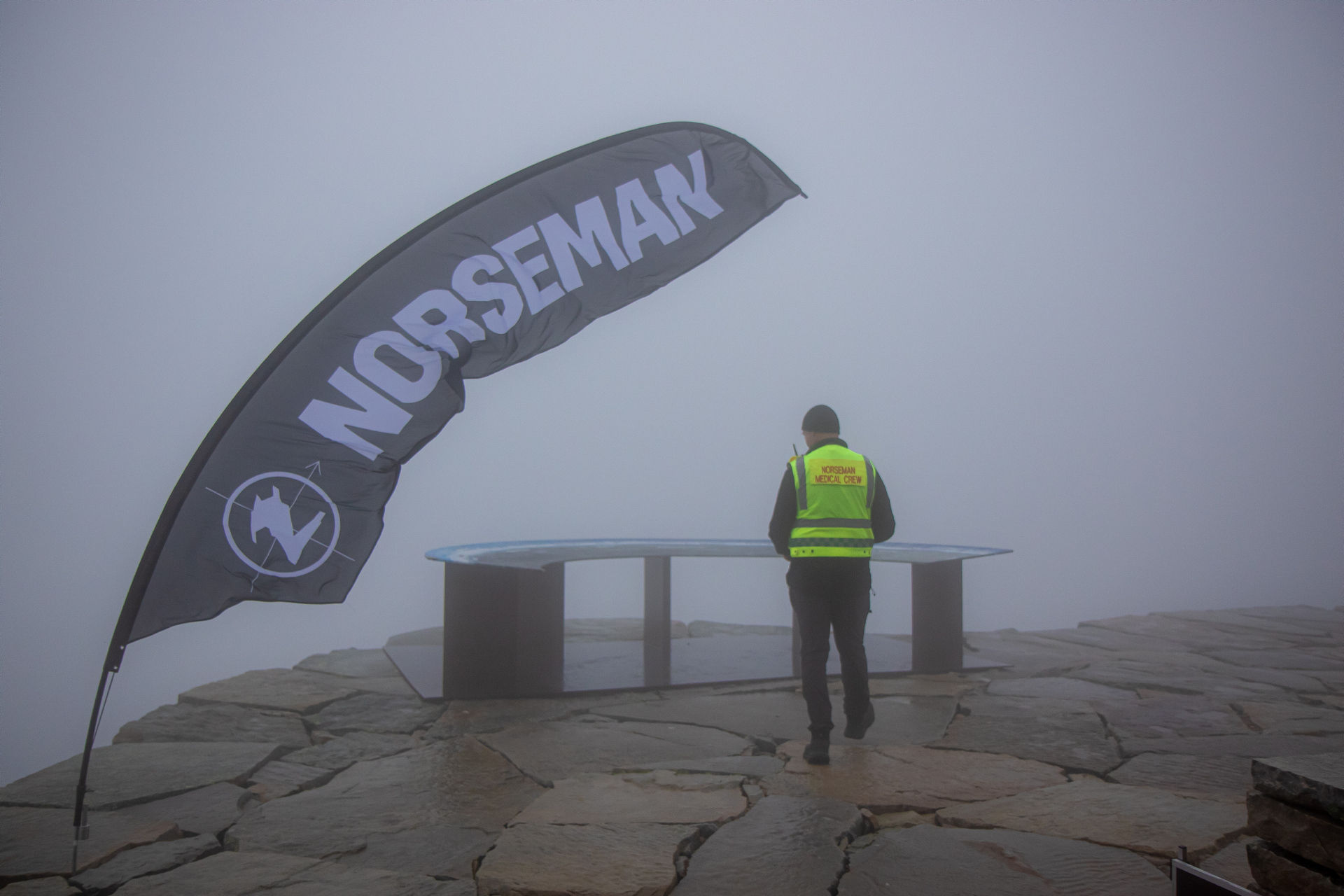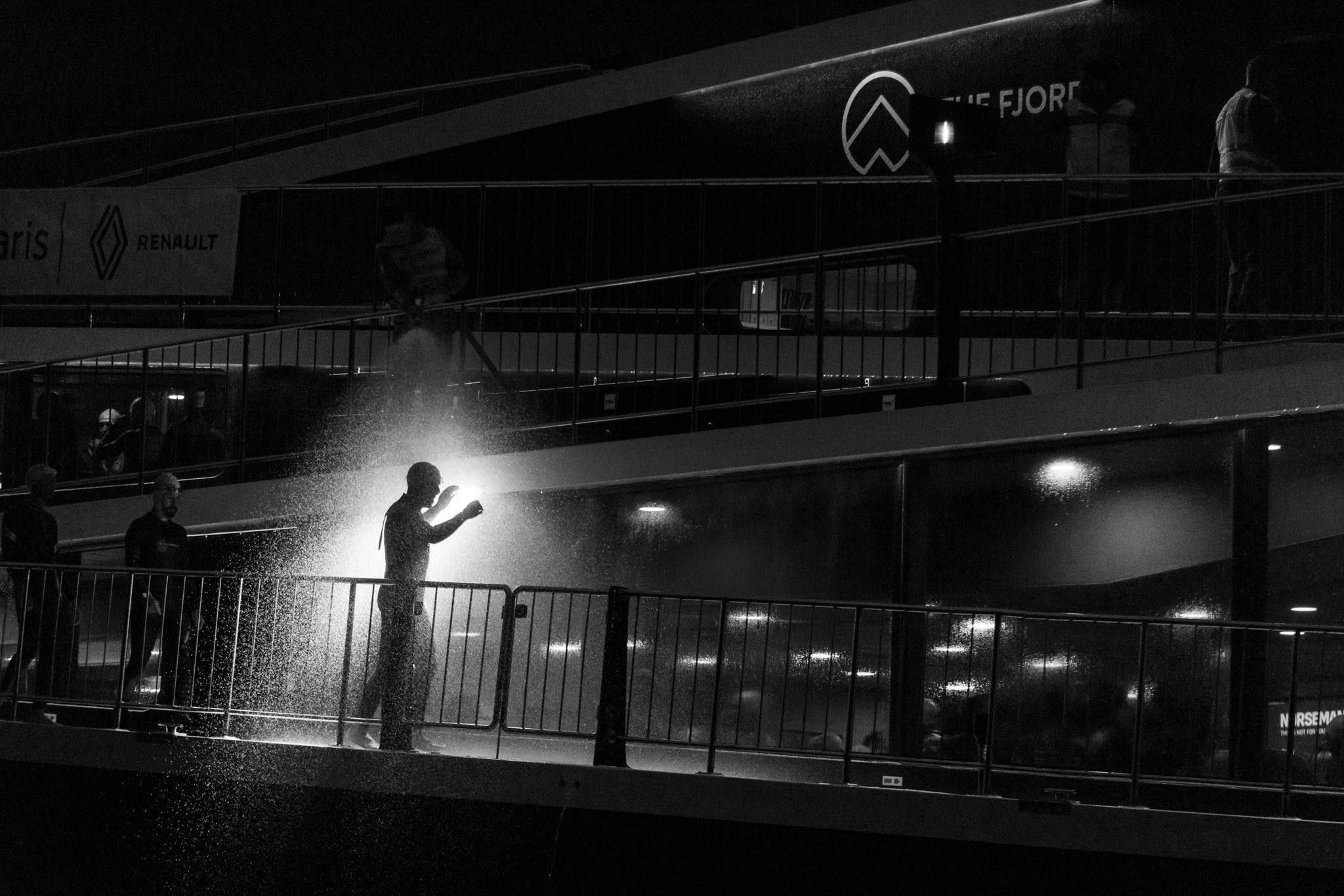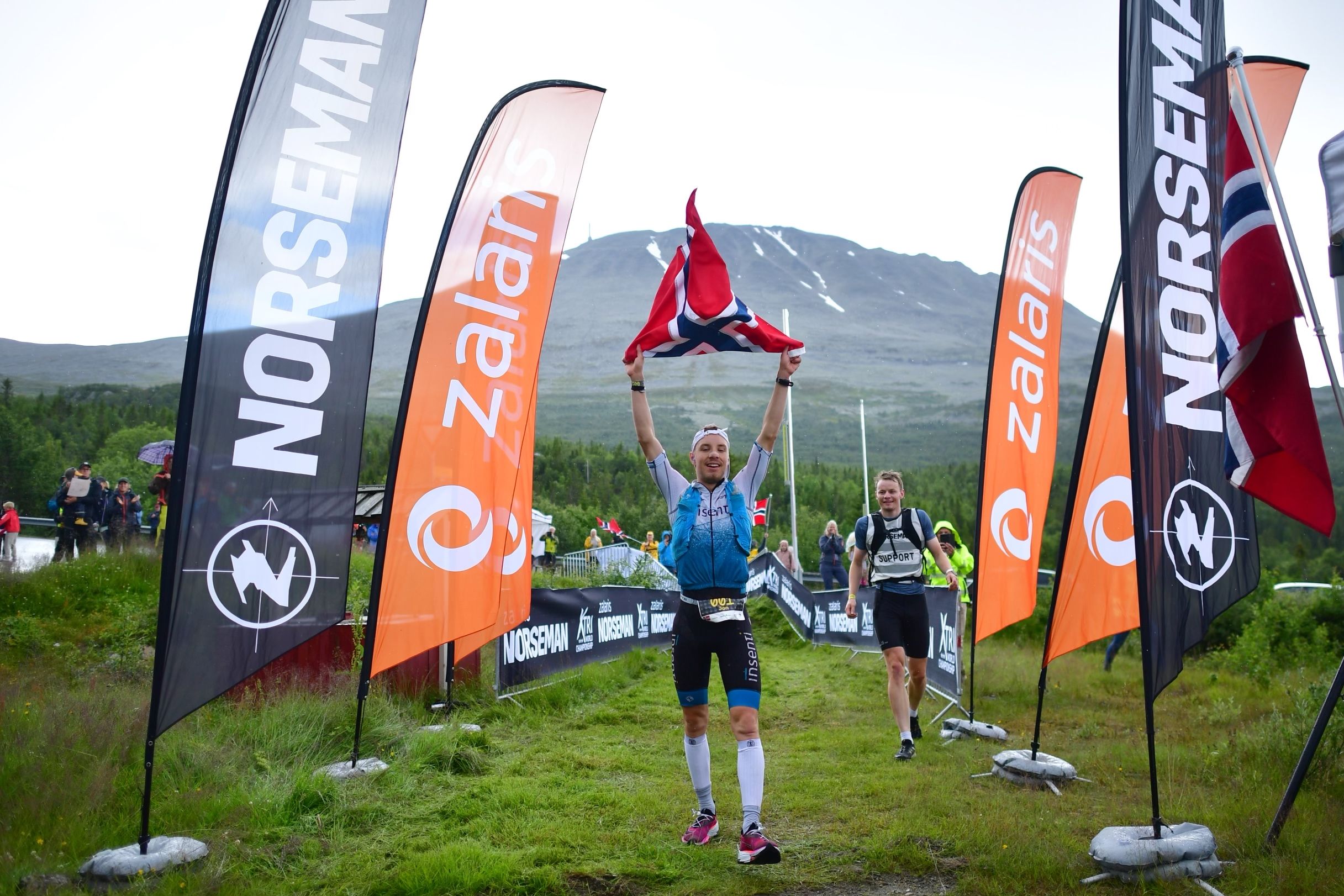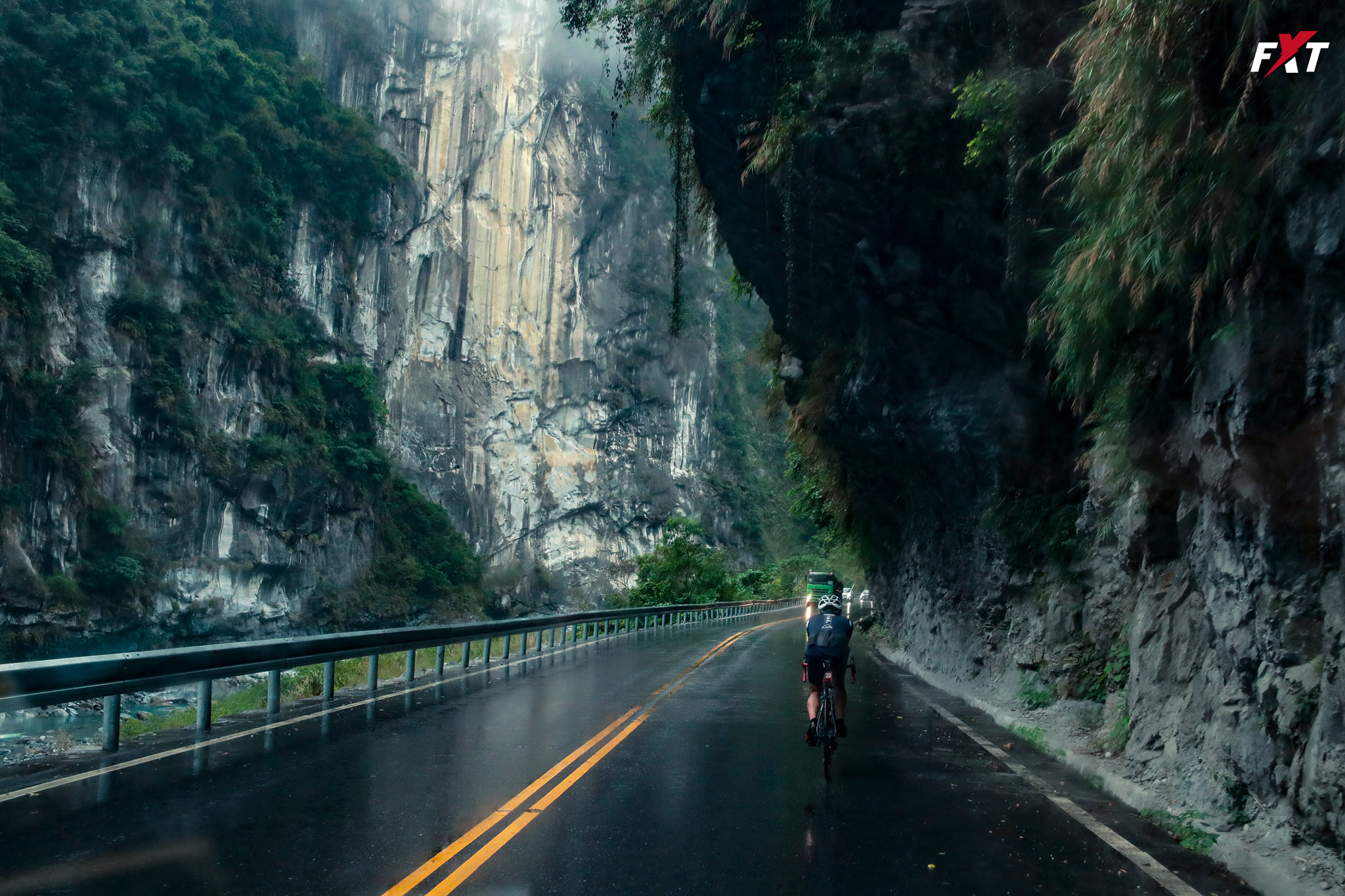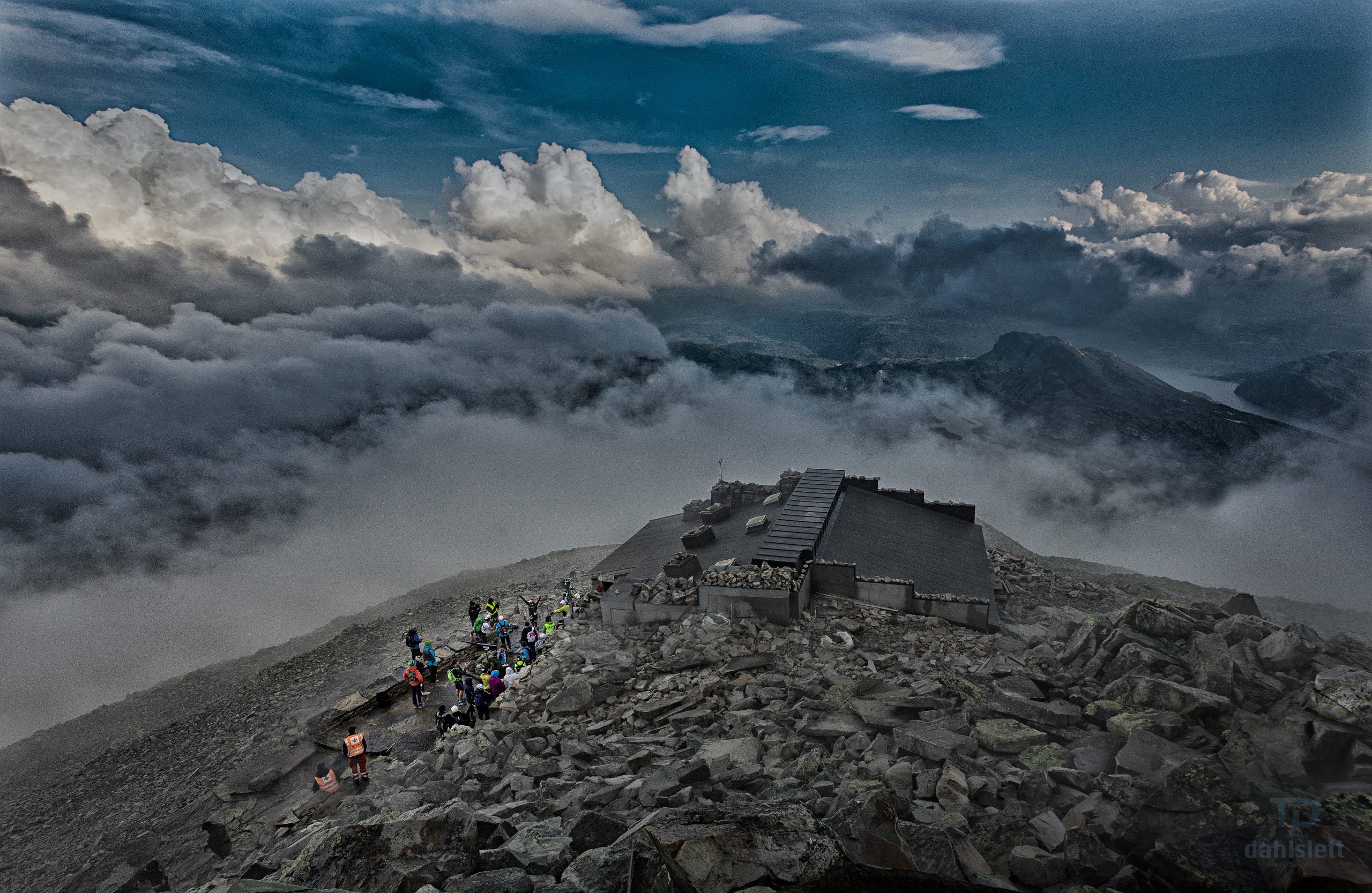This year’s weather was quite a handful. I have been safety director for Norseman for 15 years, and the 2021 edition had the all over roughest weather of them all. Sure, we had winds, cold water, rain, and everything else before. Still, not in a combination like this through the race. I was there in 2005 when we decided to close the mountains. In 2021 the conditions were more challenging. Still, we didn’t close the mountains. So why did we chose to let the athletes swim in rough water and let the mount Gaustatoppen be permitted even when there was heavy wind, fog, and rain?
The reason is as simple; it isn’t due to pure luck that it all went well.
It is because we come prepared. It is because we have a fabulous team of dedicated people. We have planned the event, evaluated it, and improved it to be better year by year. That’s not luck.
Insight.
Here’s some insight into how we work. The days leading up to Norseman had a perfect framing. Beautiful weather, warm water, and a lovely mix of athletes, locals, and crew. A few hours before the race start, the winds became gradually stronger. We measured and monitored temperature, humidity, wind speed, and wind direction every 30min with our professional and calibrated weather stations. We discussed the conditions with locals, went out to the swim start to evaluate, and monitored the conditions continuously. Finally, we assembled our Race Director Team to assess and determine a Go or No-Go for the swim. This team is activated if any severe incidents occur or some other unfortunate incidents are developing. The team consists of Torill (Race Director), Kalle (assistant Race Director), Jonny (assistant Safety Director), and myself (Safety Director).
We planned to evaluate throughout the night, and Torill and I would make the final decision outside the ferry at 0345. In due time before the ferry went out with the athletes. Then we could quickly inform the athletes at the ferry. If we had decided to cancel the swim, plans for a duathlon type start and the course for this was already in place. We have planned different scenarios for no swims in detail over several years.
We didn’t cancel the swim. The wind was quite strong, around 8-10 m/s. But we have a solid and prepared crew, including kayakers, Red Cross, and medics. And we have several options available to ensure safety for the athletes.
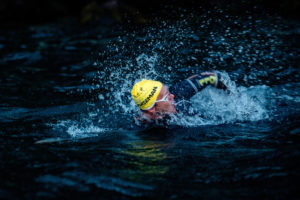
Hard Facts.
Here are some hard facts about the weather. We measured weather data with calibrated instruments, a favorable side-effect of running a research group at Norseman. The days leading up to Norseman were delightful regarding the weather. Zero wind, temperatures in their 20’s and water temperatures 18-19 degrees. At the “Social swim” on Friday, the water temperature was 19,4 and wind speed at 2m/s.(meters per second) The weather started to shift the evening before the race start. I remember sitting at the “pasta buffet” talking to a nervous athlete when we suddenly spotted a sturdy whirlwind at the fjord.
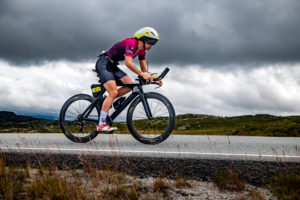
Race.
At race start (0500), the wind speed was between 8 and 10 m/s but gusting even more. That is a breeze. The water temperature was 16,9 Celcius, so no worries there. At T1, the air temperature was 18,3 and wind speed 2,5, so relatively calm. Then the wind started to speed up at the first part of the bike leg. At Dyranut, the wind speed was 13,3 m/s and temperature at 8,0 Celcius. At Imingfjell, it was 2,6m/s and 10,7 Celcius.
Everything looked pretty okay at the run leg, that is, until you reached the mountain. At Gaustatoppen, the wind speed was 12-15m/s. This is a gale. The wind was gusting up to 22m/s. On top of that, the temperature was 3-4 Celcius with showers of rain. Combining the wind and the temperature, you have a wind chill of a few degrees below zero.
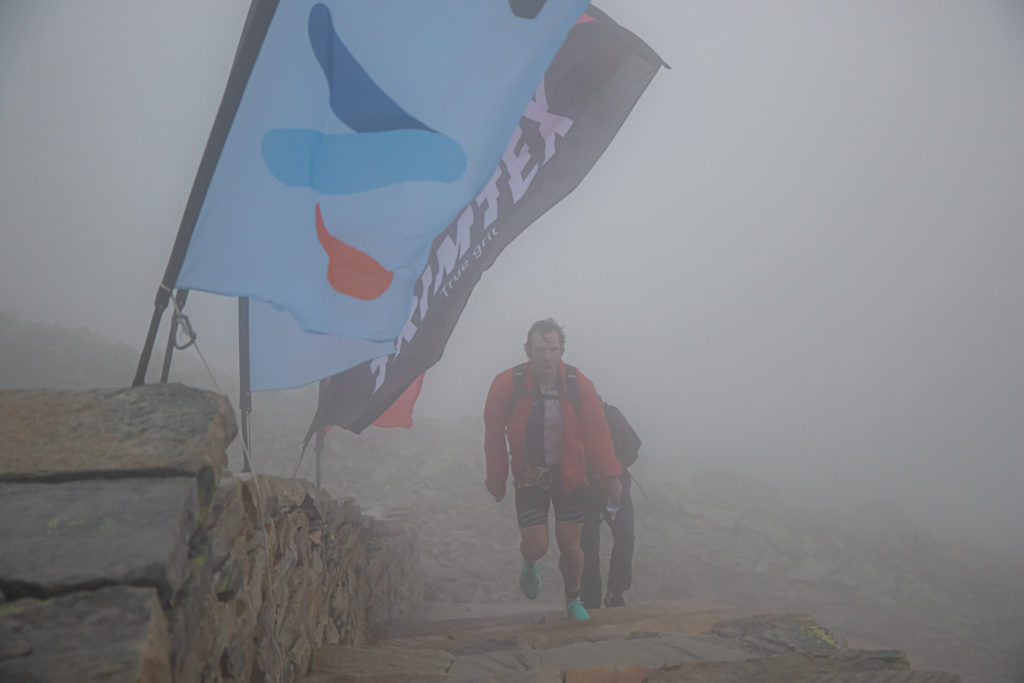
Decisions.
We discussed the closure of the mountain several times during the day. We concluded it was well within the limits of safety. The locals are invaluable when decisions like this have to be made. We rely heavily on their experience with the mountain. We also have plans to tackle bad weather conditions and reorganize the race if the mountain has to be closed. One minor but essential safety measure is that the athletes have to carry a backpack with dry clothes and other necessities if sudden bad weather occurs. As already mentioned, the wind speed was relatively high. Add to that fog, rain, and near-freezing temperatures, the last part of the race was challenging for the athletes. Inside the mountain, we set up a small field hospital suited to handle minor to severe incidents if they occur. Add up all our preparations and knowledge, and we decided that there was no need to close the mountain.
So you still believe that everything went well due to pure luck? Well, it was not. It was due to proper planning and a skilled crew. Can we do it better? Yes, we can! We have to improve continuously to stay ahead of trouble.
